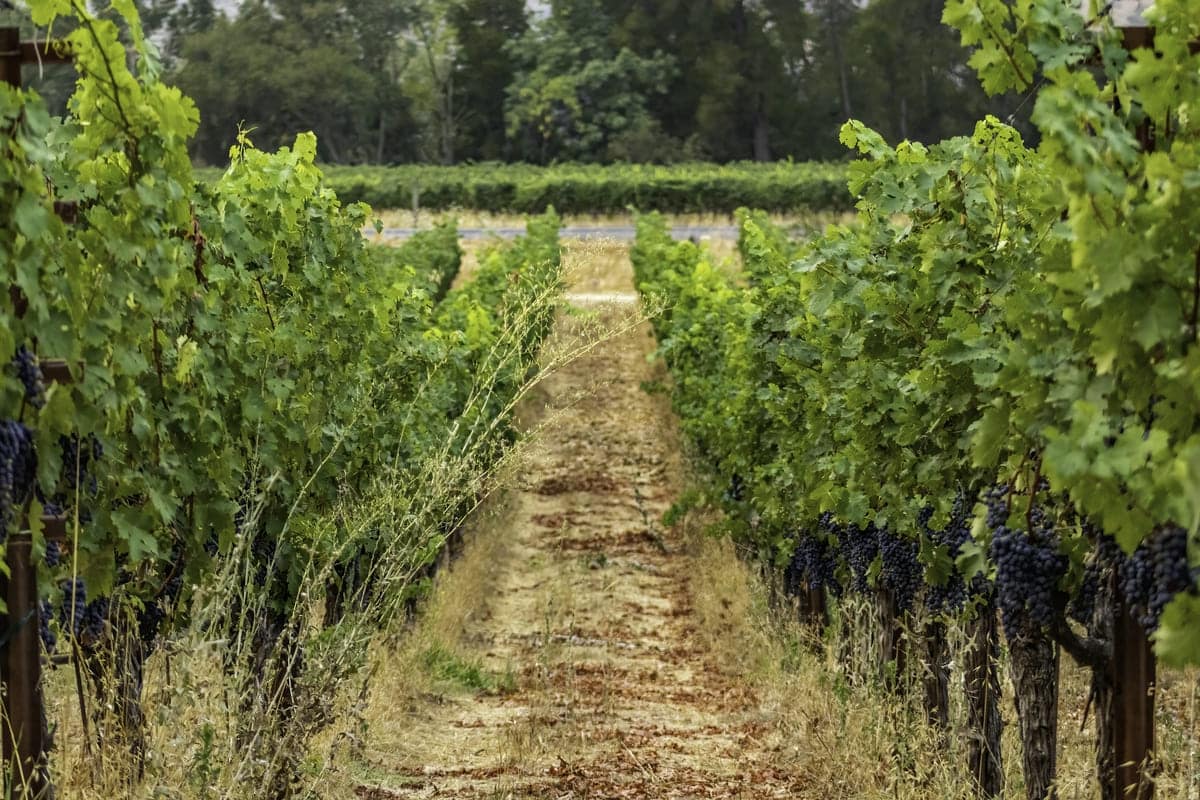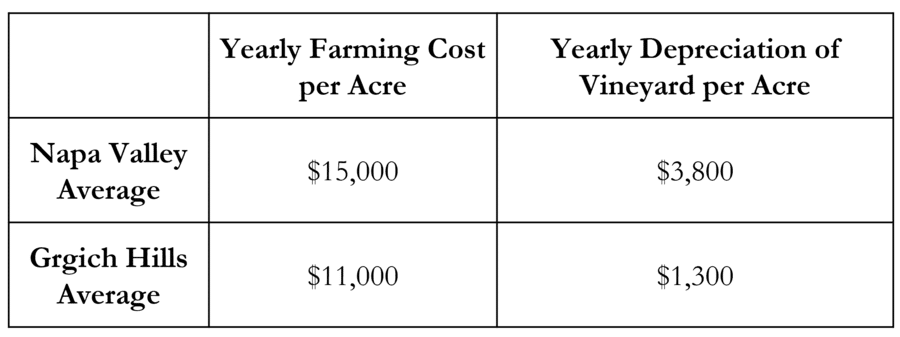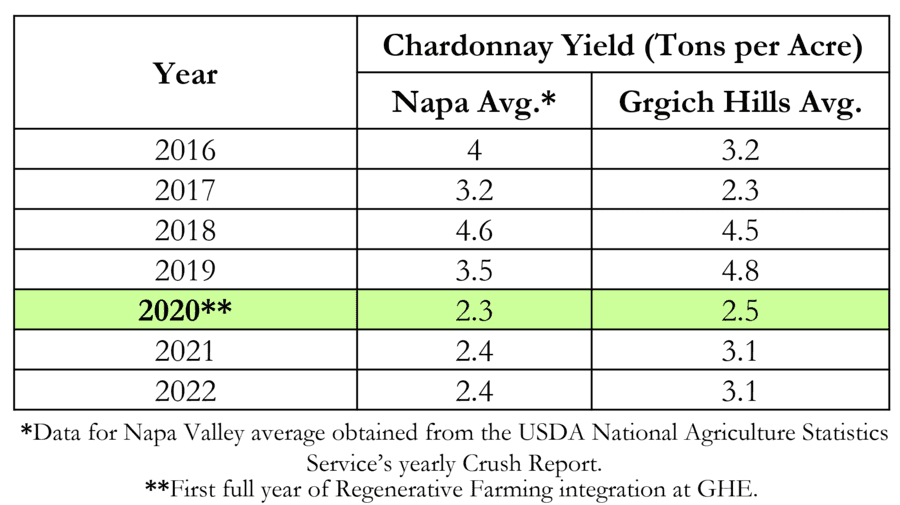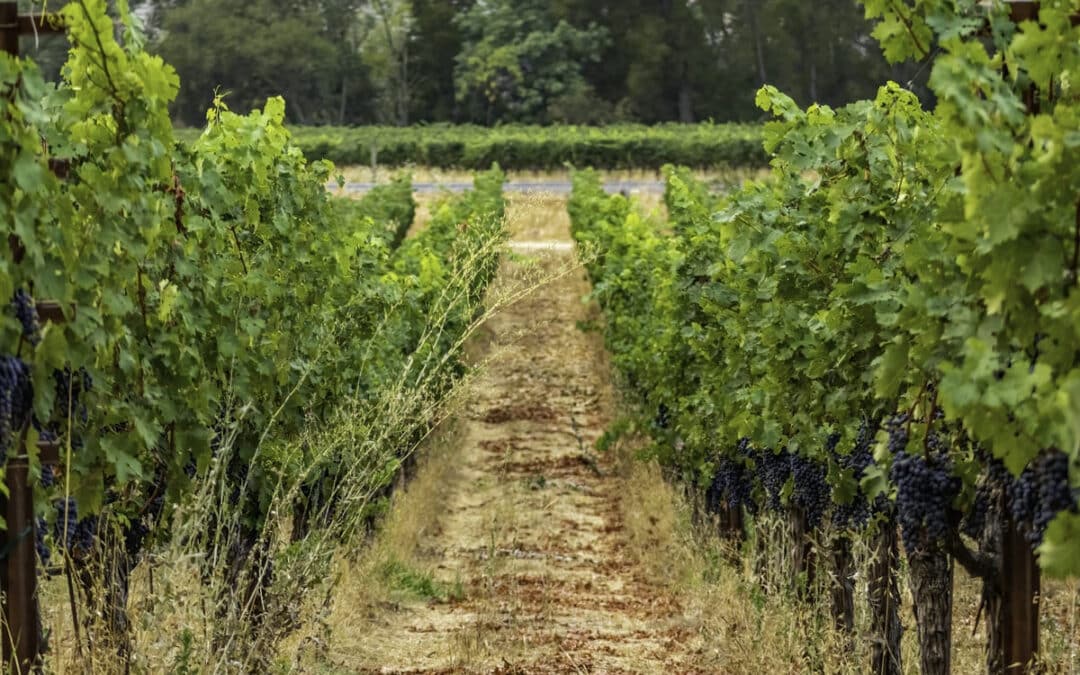Cost, Chemicals, and Cashflow: 3 Myths of Regenerative Farming

Sustainably grown, biodynamic, organic wine, regeneratively farmed – these are all terms that make many vintners cringe and clutch their wallets. The commonly held belief is that these practices come with a hefty price tag, and while this is an understandable concern (a winery is a business, after all) the truth is quite the opposite.
Regenerative farming is actually substantially more cost-effective than conventional farming. Since turning to this style of farming, we’ve seen a decrease in yearly farming costs as well as yearly vineyard depreciation, both of which have fallen far below the averages for Napa Valley vineyards.
We’ve been certified organic since 2006, and began integrating regenerative farming practices in 2019, experimenting and learning each year to see what works best in our vineyards. We’ve found that our move to the holistic, natural farming that the regenerative movement prescribes has caused our vineyard management costs to shrink.

However, myths that discourage more people from converting to regenerative farming persist, and most of them have to do with fears about vineyard productivity and expenses associated with making the change. As a winery that has gone through the process and is now a few years out, we are here to dispel these myths and show how we’ve reduced costs while adapting all 365 of our vineyard acres to regenerative farming.
Myth: If I don’t spray herbicides, my vineyards will be overrun with weeds and disease.
When pesticides like glyphosate were introduced to agriculture, they were revolutionary. Farmers could eradicate all those pesky weeds that were taking away valuable resources from their cash crops. What they didn’t realize, though, was that they were also exterminating microbes, which are integral to the health of the soil and all things grown there, including vines. The condition of the vines is paramount to both the size and quality of the harvest.
The facts: If you rethink the word “weed,” you can optimize vine growth at significantly less cost.
We’ve implemented alternative forms of weed management in a few ways:
The first of these is the sowing of a cover crop. Most species of plants considered ‘weeds’ compete poorly with others, thriving only in environments that lack competition from other species. This is why managers of bare-ground vineyards are often in a constant struggle against weed colonization. When you introduce beneficial plants, the weeds are far less successful in proliferating. These plants also benefit the soil by fixing various nutrients and increasing the diversity of the soil’s microbiome.
In addition to a cover crop, livestock integration is crucial to the maintenance of a regeneratively farmed vineyard. During the winter, while our vines are dormant, thousands of sheep descend into our vineyards and graze on the plants growing in between our rows. We also utilize infrequent mowing throughout the rest of the year.

Recently, we’ve also begun experimenting with a fully hands-off approach when it comes to weeds, which we’ve begun to think of as companion plants. In the summer months, these companion plants are the only thing that can grow in between our rows due to the heat and lack of water, and they too serve a purpose in the ecosystem, structuring and adding diversity to the soil microbiome. Contrary to common belief, this unintended vegetation does not steal nutrients and water away from the vines. In the vineyards where we’ve allowed them to grow, even our youngest vines (1-3 years of age) have been thriving.
All in all, these practices that replace the use of glyphosate are extremely cheap, accounting for less than 3% of our total cost of farming per year.
Myth: My plants need artificial fertilizers. They won’t have enough nutrients without them.
This myth is partially true. Soil that has been over cultivated by tilling and pesticide application will not contain the microbes necessary to provide nutrients for your plants. This is why we don’t recommend abandoning all your farming practices cold turkey.
The facts: It takes patience, curiosity, and flexibility to make the change.
It was over the course of more than 15 years that Grgich Hills implemented this gradual shift, reducing the amount of fertilizer and pesticide use each year while incorporating new regenerative principles that ensured our vines transitioned smoothly to their new environment.
Myth: Organic/Regenerative farming results in lower yields.
After all, it all comes down to yields right? The dependability of conventional farming practices is thought to provide predictably high, and consistent numbers year over year. But organic and regenerative farming, once established, provides a resilience against environmental unpredictability that can thwart even the most well-practiced conventional farmers.
The facts: Since implementing organic and regenerative practices, we’ve seen yields that consistently fall above the Napa average.
The table on the right showcases the average Grgich Hills yield compared to the Napa Valley average. Some important considerations:
- We began farming organically in 2006, and started implementing biodynamics in 2007. Neither addressed all of our concerns.
- Regenerative farming principles were introduced to our vineyards in July of 2019, but 2020 was the first full year that they were practiced.
- 2020 was also the first in a string of drought years. In 2020, 2021, and 2022, Napa received far below average rainfall, resulting in lower grape yields throughout the Valley. Because regenerative farming is so reliant on the presence of cover crops in the initial years, this was a suboptimal time to begin the switch, as the lack of rain stifled their growth. Still, we managed to maintain steady yields above the Napa average all three years.

Regenerative farming is a practice that is still in relative infancy, and each year we’re learning more about what works and what doesn’t. But numbers speak for themselves – especially in the world of business – and our numbers are proclaiming this simple fact: regenerative farming is not only incredible for the environment, but also an extremely cost-effective form of agriculture.

